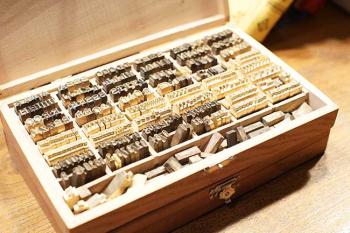




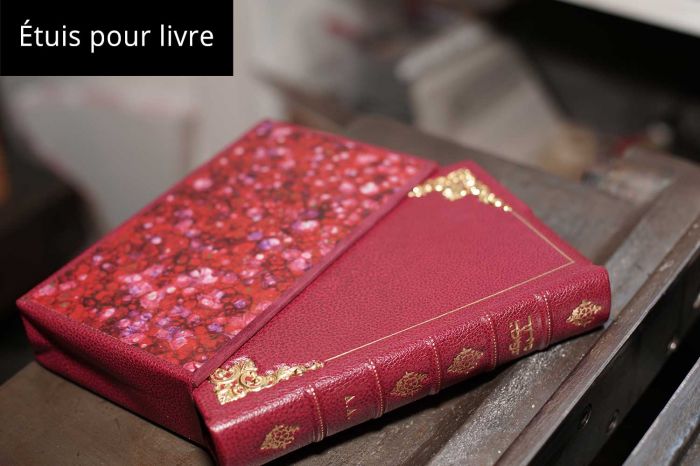

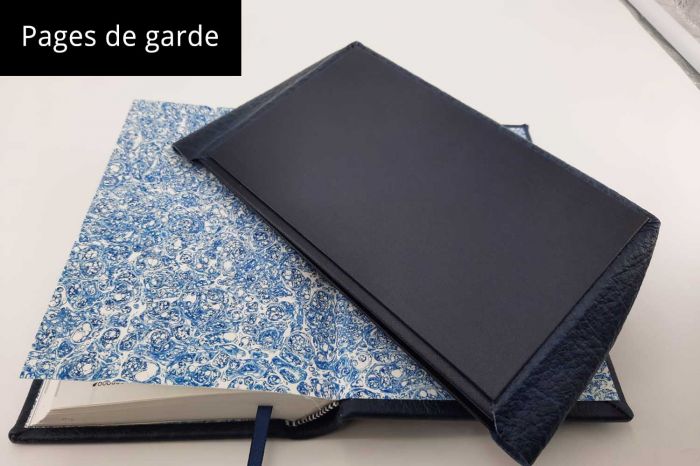
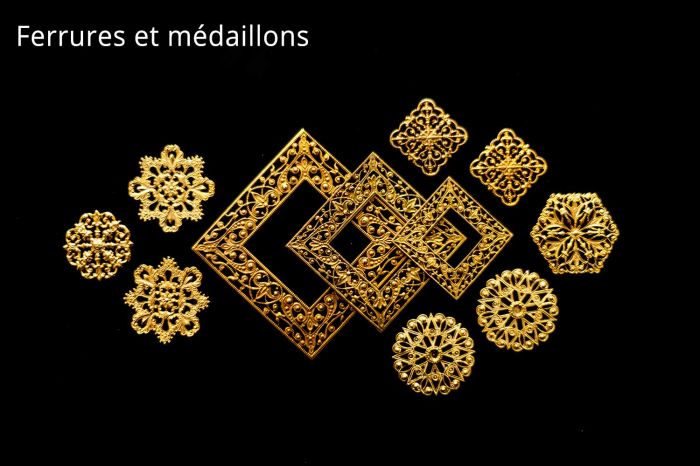
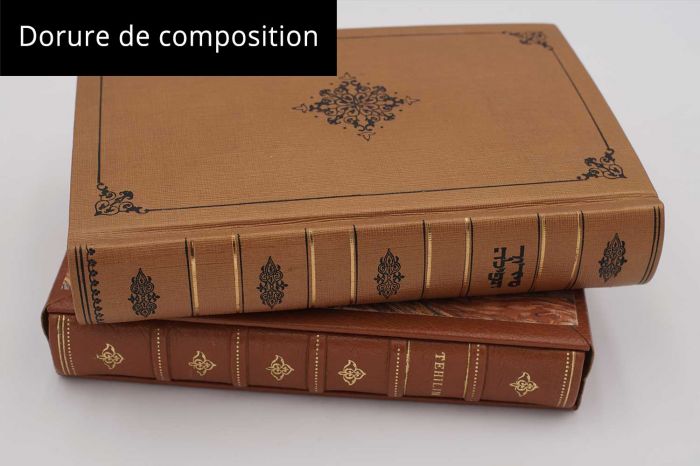
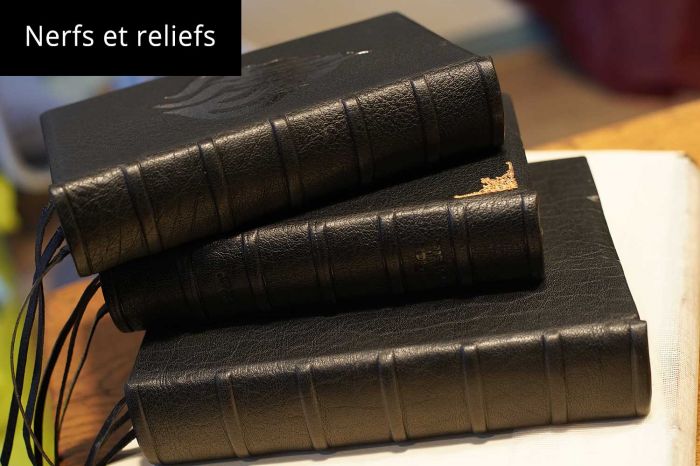
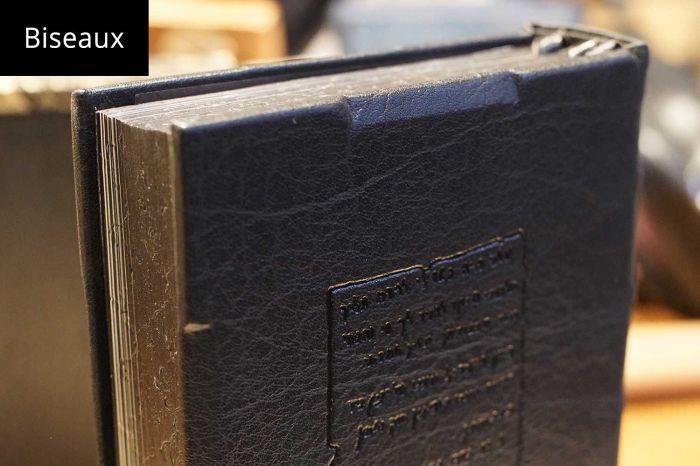
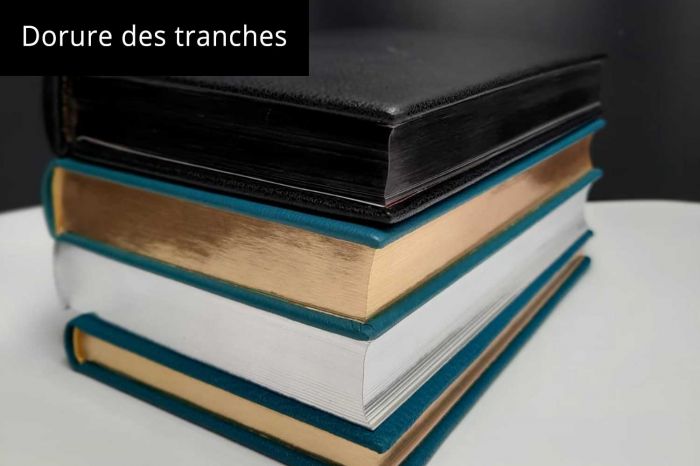
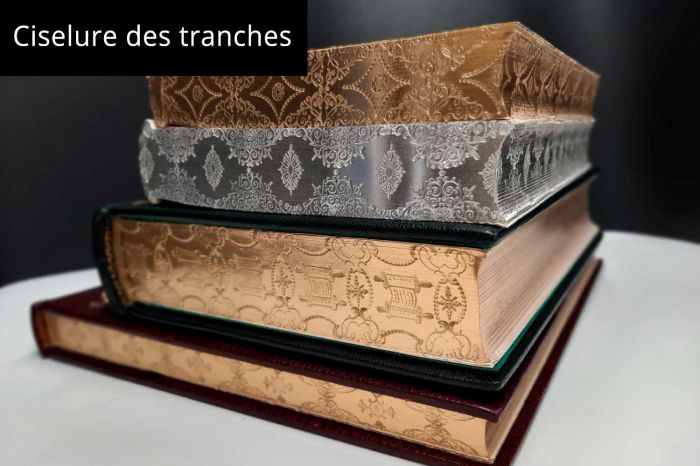
The bookbinding glossary
Edge gilding: Edge gilding: artisanal operation consisting in covering the edges of a bound book with gold or colors in colors: gold, silver, black, etc., and in appearance: smoked, matte, shiny.
Composition gilding: creation of different gilding decorations on the covers and spine of the book, such as compositions of fillets, fleurons, wheels, etc.
Edge chasing: artisanal process of ornamenting the gold or silver edge according to different decorative patterns (using a gilding iron)
Endpapers: sheets of paper placed at the beginning and at the end of a book making the connection between the binding and the body of the latter. There is a wide variety of paper such as marbled, decorated or plain paper (which matches the colors of the binding)
Bevels: edges of the book cut at an angle to give several reliefs to the cover.
Nerves: Also called ribs, nerves are the visible protrusions on the spine of a book formed by the strings covered with the seam binding the quires together. Nowadays, the nerves are mainly visible for aesthetic purposes.
Reliefs and vats: cardboard sculpture under the leather which is made either protruding or recessed in relation to the cover of the book.
Hot foil stamping, stamping and embossing: printing of a text, an image, a design on a magnesium plate which is reproduced on the leather either in relief or in hollow, in gilding or cold gilding.
Fittings and medallions: fittings, medallions in gold, silver or bronze shapes or corners embedded in the leather for decorative purposes
Book case: case used as a receptacle for the book for protection purposes. It is made from cardboard, leather, fabric and canvas and usually matches the book.


